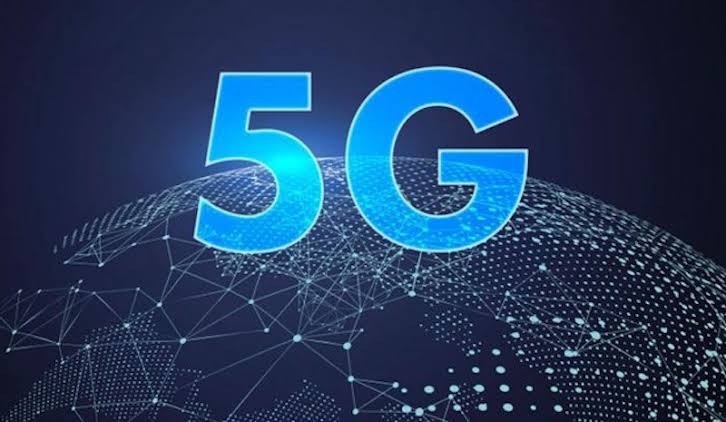It seems like a very long wait on 5G, the fifth generation of wireless telecommunication network, which is supposed to supersede the 4G protocol, also known as the Long-Term Evolution (LTE).
The 4G was introduced on December 14, 2009, and our eyes have been on the road for 5G for a while now, but it seems that the technology has not been forthcoming.
The promise of the 5G technology is so lofty that its anticipated deployment has been the subject of political battles, as Western countries try to prevent Chinese companies, particularly, Huawei, from participating in anything 5G in their countries.
Let’s trace our route. Wireless phone technology technically started with the first generation (1G) in the mid-1980s. (The first 1G network was reportedly launched in the USA by Chicago-based Ameritech using the Motorola DynaTAC mobile phone.)
The 2G cellular network was commercially launched on the GSM standard in Finland, enabling people to send text messages between two cellular devices.
Then we moved on to 3G in 2001/2002, which allows us to make phone calls, send text messages, and browse the Internet.
Then 4G came, in 2009, enhancing many of the capabilities of 3G – sending text messages, making phone calls, downloading and uploading large video files.
Then the LTE was introduced to 4G connectivity. It became the fastest and most consistent variety of 4G, compared to competing technologies like WiMAX.
The 5G is synonymous with phenomenal speeds of Internet access – comparable to those associated with fiber optics, giving response times that are less than one-thousandth of milliseconds.
Some of the promised performance of 5G includes: 100 times the speed of 4G, seamless interoperation with Internet of Things (IOT), tight security, low latency between device and network, smart home, media consumption, augmented reality, self-driving cars, telemedicine, and so on.
But where is the 5G that we have been promised?
This column in Daily Trust has heralded the coming of 5G since the article on 18 July 2016.
Numerous other articles in this column have followed, including those on 31 December 2018 (2019: The Year of 5G), 18 February 2019 (5G News Everywhere), 6 May 2019 (Expert Advice for Governments on Effective 5G Deployments), 10 February 2020 (EU’s “5G Toolbox” Has Huawei on the Crosshairs), and 17 August 2020 (The Status of 5G Global Deployment).
To be sure, The Korean Times of 28 December 2018 reports on the application of 5G network technology by KT, a Korean phone carrier, to a barista robot at an unmanned cafe near Gangnam Station in southern Seoul.
The same newspaper also reports on a 5G deployment by another Korean carrier – SK Telecom, who unveiled its smart factory systems incorporated with 5G networks, artificial intelligence (AI), and cloud computing technology on 27 December 2018.
Several phone telcos in the US and elsewhere have advertised the incorporation of 5G technology into their phones or cable services.
The only problem is that consumers don’t know whether they are communicating or being communicated with on 5G.
In the New York City metro area where I live, I have Optimum Online for my landline phone, cable, and Internet service.
My modem allows me to toggle between 2G and 5G. The only problem is that I do not notice any changes in speed of connection when I switch between the two networks.
This sometimes makes me feel that the whole 5G thing may indeed be a hoax in the current state of deployment.
Of course, I am aware of the inherent problems with 5G. The millimeter waves – which are what you typically associate with the 5G network, are in the high-frequency-band spectrum.
They can carry lots of data, but the waves are also dissipated more easily by gases in the air, trees, moisture, and nearby buildings.
Therefore, while 5G networks may be quite useful in densely packed areas, they are not able to carry data for long distances due to the attenuation.
For this reason, different (low, medium, and high) frequency parts of the radio spectrum need to be combined in a network for acceptable 5G performance.
The Galaxy Note 20 Ultra, Samsung’s latest smartphone, was released on 21 August 2020. It promises extensive 5G capabilities.
Huawei P40 and Mate 30 series smartphones, both support 5G versions, but in addition to not knowing the performance of 5G on these devices, the devices, unfortunately, also lack Google Play Services integration, meaning that there is no Gmail app, Google Search app, Assistant, Play Store, and some third-party apps.
Apple’s latest smartphone, iPhone 12, which was unveiled on Tuesday (13 October 2020), is expected to include superfast 5G wireless connectivity and a new, iPad-inspired design.
In terms of 5G deployment, Apple will be leapfrogging Samsung, who already has at least ten 5G phone models available, and shipped over half of the 5G units in 2019. (Although by number of customers – thanks to China – Huawei is perhaps the largest 5G phone seller, but with all these problems with Android, it is difficult to vouch for Huawei’s 5G devices.)
So, as it were, the state of real 5G deployment is quite unclear. Hopefully, the so-called “Apple Effect,” that is, “Whatever Apple does, it almost immediately becomes a success,” will help us make a sense of it all, and we’ll probably know in a few months.

 Join Daily Trust WhatsApp Community For Quick Access To News and Happenings Around You.
Join Daily Trust WhatsApp Community For Quick Access To News and Happenings Around You.


